INGREDIENT
challenges
Mooove aside, dairy—innovation in the dairy alternatives retail space is booming.
Know How
No Cow
The dairy alternative segment is forecast to continue its strong growth trend well into the coming years, according to research group Mintel. Consumer cognizance of health and wellness as it relates to the diet has inspired many to seek dairy alternatives. Additionally, given consumers' increased awareness of environmental issues and heightened loyalty to sustainable products, dairy alternatives offer the perfect chance for consumers to continue to indulge without compromising their values. Similarly, many consumers avoid dairy for medical (such as lactose intolerance/sensitivity and dairy allergies), ethical, and religious reasons. This also has led to a heavy demand for dairy alternatives.
Since “dairy-free dairy” must deliver on a range of needs, consumers seeking dairy alternatives due to an allergy or lactose sensitivity may want products that have comparable nutritional profiles to a dairy counterpart. Meanwhile, those who are avoiding dairy due to ethical and environmental reasons may be more intrigued by new spins on traditional dairy products. Likewise, environmentally conscious consumers may be seeking dairy alternatives that use sustainable ingredients and processing methods.
Animal-derived milk is an oil-in-water emulsion. Milkfat globules and casein micelles are dispersed within milk plasma, an aqueous phase that contains soluble whey and lactose, along with the casein micelles. Milk foam, such as whipped cream and ice cream, and casein gels, such as yogurt and cheese, are molecular structures formed due to the emulsifying, thickening, and gelling properties of casein and whey proteins. Milkfat and lactose carry the recognizable and satiating flavors associated with dairy products, and dairy processing methods—such as heating and fermenting—also yield unique flavor compounds.
Video courtesy of: Getty Images / DenisZbukarev
By OLIVIA CONRAD, Contributing Technical Editor
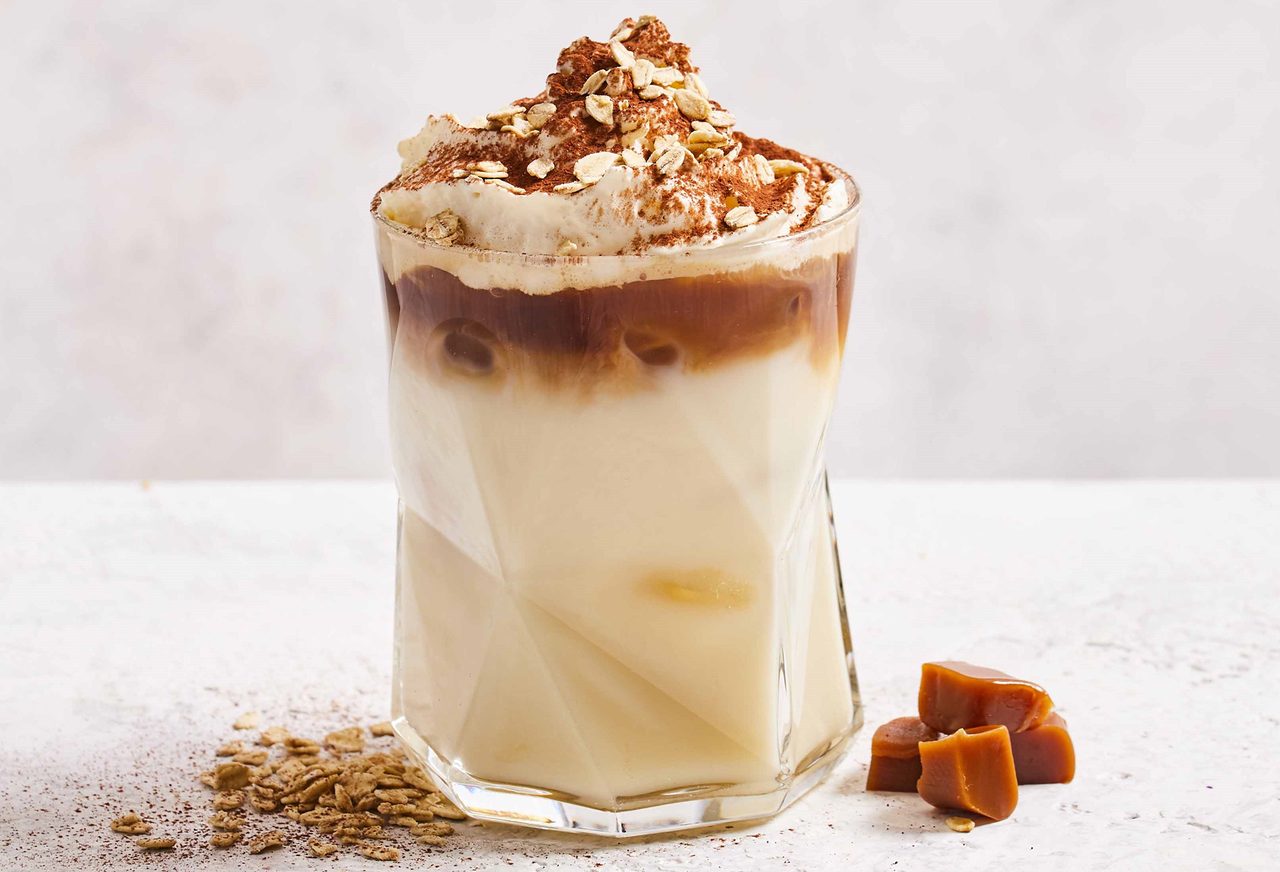
Clean-label ingredients with additional nutritional benefits combine to create dairy alternatives that boast high nutrition content and low sugar. Photo courtesy of: Kerry Ingredients/Kerry Group, plc
Molecular Mimicry
The rise in consumer demand for dairy-free products has challenged developers to mimic the unique functions of the casein, whey, lactose, and fat found in animal milk.
“With dairy alternatives, developers and ingredient companies typically have to take a ‘divide and conquer’ approach,” explains Tamanna Ramesh, MS, MBA, Certified Food Scientist and senior scientist in innovation and technology for The Kraft Heinz Co. “Researchers focus on flavor, texture, appearance, and functionality as separate entities and try to find the best combination to mimic traditional dairy products holistically. There is a huge need for utilizing the fundamentals of food science, including emulsions, hydrocolloids, rheology, and texture, to optimize various functional aspects that would allow non-dairy products to mimic traditional dairy products.”
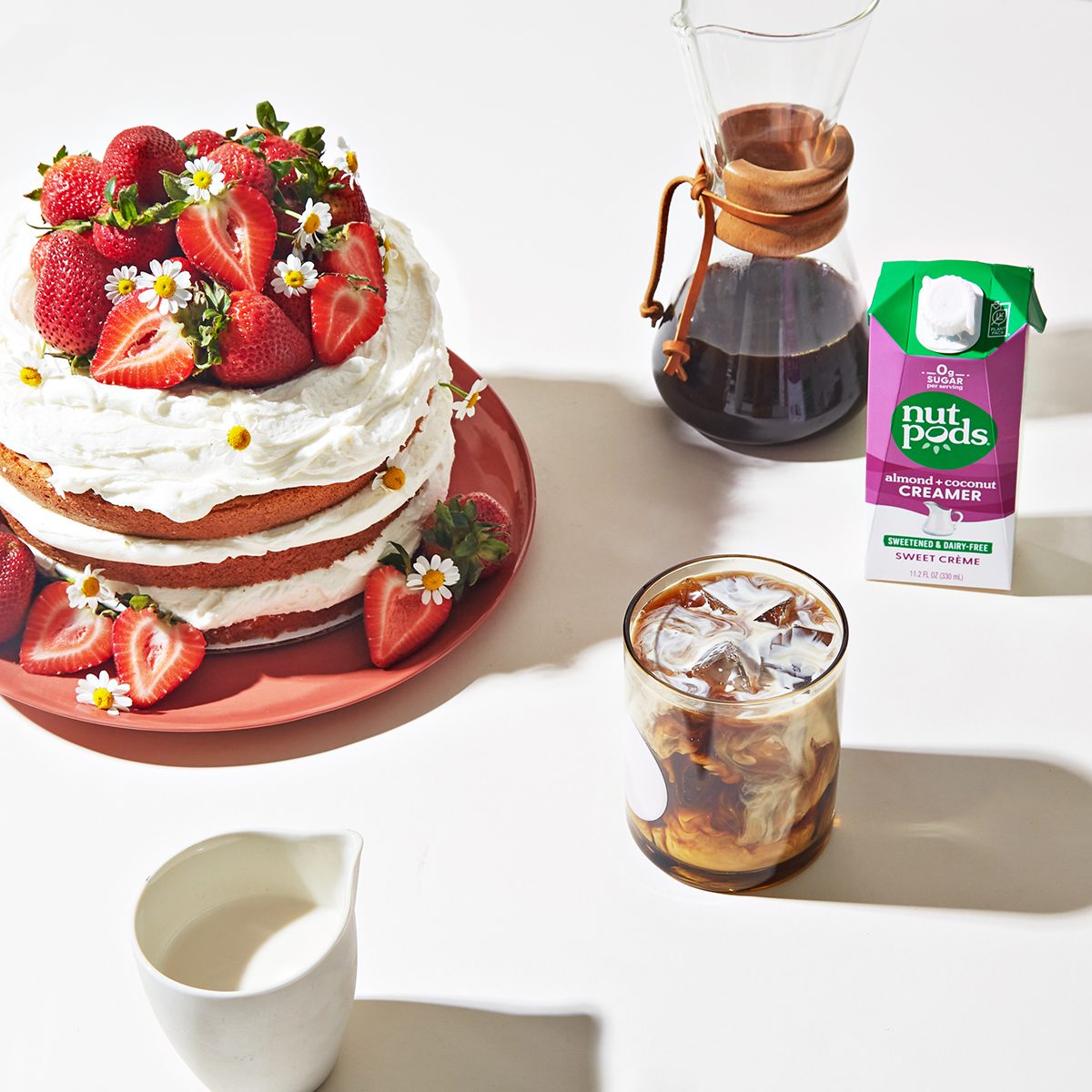
Dairy milk alternatives have made great advances in mimicking not only the organoleptic characteristics of dairy but the functionality as well. Photo courtesy of: Green Grass Foods, Inc./Nutpods
Dairy analog developers are utilizing unique combinations of soluble fibers, proteins, starches, hydrocolloids, and clean-label ingredients to deliver textures that rivals cow’s milk and traditional dairy products. Some of these ingredients include fibrous fruits, whole grains, and high-protein plant flours. “Almond, coconut, oat, hemp, soy, cashew, flax, and rice have been some of the common sources for alternatives to cow milk, ice cream, and yogurt,” adds Ramesh. “Chickpea, soy, pea, and fava bean-based ingredients, in combination with food starches and plant-based fat, are especially common in formulations for cheese alternatives,” she adds. Tree nuts, especially almonds and cashews, as well as rice also are used in crafting cheese replacers.
No Plants Were Harmed
Some companies are focused on delivering to consumers who prefer the complete sensory and nutritional aspects of true dairy, but who choose to avoid dairy for ethical and/or sustainability reasons. For these consumers, cellular (sometimes called “lab-grown”) dairy could be the perfect answer. Instead of seeking plant-derived ingredients to mimic dairy, companies such as Brave Robot Animal-Free Ice Cream are using non-animal whey protein to engineer the sensory experience of dairy ice cream.
Imagindairy, Ltd., a biotechnology start-up founded in March, 2020, is manufacturing non-animal milk proteins via natural, precision microbial fermentation. The company’s tech involves feeding microorganisms instead of cows, and the select microorganisms employed are up to 20 times more efficient than cows at converting feed into food. The advanced technology allows for closer texture and flavor mimicry. The outcome: highly functional milk proteins that taste great and have the same texture, flavor, and nutritional value as milk from cows. The resulting cow-free milk proteins will enable manufacturers to create true milk and dairy products with all the nutritional values of dairy milk. The benefits of lab-grown dairy address the same consumer drivers for plant-based dairy consumption: No animals are required, the production process is both sustainable and cost-effective, and it offers food-system resilience. It allows for complete sustainability, preserves the natural ecosystem, and promotes animal welfare. It also eliminates the greenhouse gas emissions produced by dairy cows.
The pace of cell-based animal protein development got a shot in the arm last month when the Good Food Institute joined Representatives Rosa DeLauro (D-CT) and Katherine Clark (D-MA) in announcing the USDA’s $10 million investment in the creation of the nation’s first-ever government supported cultivated protein research center of excellence. The aim is to help increase food production in sustainable ways and create a robust, more resilient food system.
Putting the freeze on dairy fakes
Makers of plant-based ice cream, yogurt, and cheese rely on a toolbox of ingredients to attain dairy-matching qualities, including thickening, stabilization, fat-replacement, and flavor systems. This is especially true of plant-based yogurts and cheeses, which must use thickeners and stabilizers able to mimic the firm molecular casein-protein gel structure. Combinations of proteins, starches, and fibers are typically called for.
Hakuna Brands, Inc.’s Must Love brand, is just one of many frozen dessert lines sitting in for ice cream. The plant-based company uses dates, bananas, and oats to give their product a sweet flavor and a robust, creamy mouthfeel. “On our banana line, the bananas themselves are a huge part of getting the ‘chew’ you expect in traditional dairy ice cream,” explains Hannah Hong, co-founder of Hakuna. For its plant-based frozen dessert line “SweetPea,” Little Bean, LLC utilizes chickpea protein to simulate the creaminess of dairy ice cream.
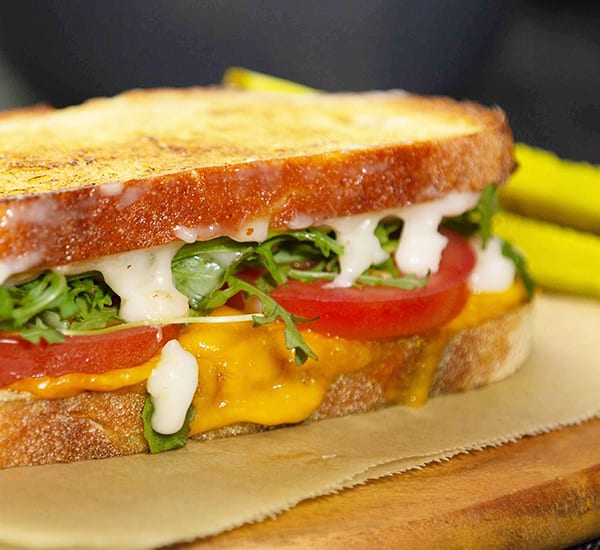
Flavor mimicry is nearly as complex as texture matching, both being the greatest challenges in formulating a clean-label dairy alternative. Photo courtesy of: Arthur Schuman, Inc.
Similarly, clean-label starches, such as tapioca starch and potato starch, are used along with natural thickening ingredients such as pectin and other hydrocolloids. These are especially popular in formulations for plant-based yogurt, ice cream, and milk alternatives. Their chief benefit is that they are aroma-free and flavor-neutral, and they provide similar spoonable and pourable qualities to their traditional counterparts, without chalkiness or grittiness.
Familiar flavors
Dairy flavor mimicry is just as challenging as texture matching. Developers are utilizing flavor additives, such as bitter blockers, flavor maskers, and flavor enhancers, all of which can help to mask unwanted flavors from plant-based ingredients. Some formulators also add dairy flavors to simulate a true dairy sensory experience. A major challenge of high flavor usage is increased product cost.
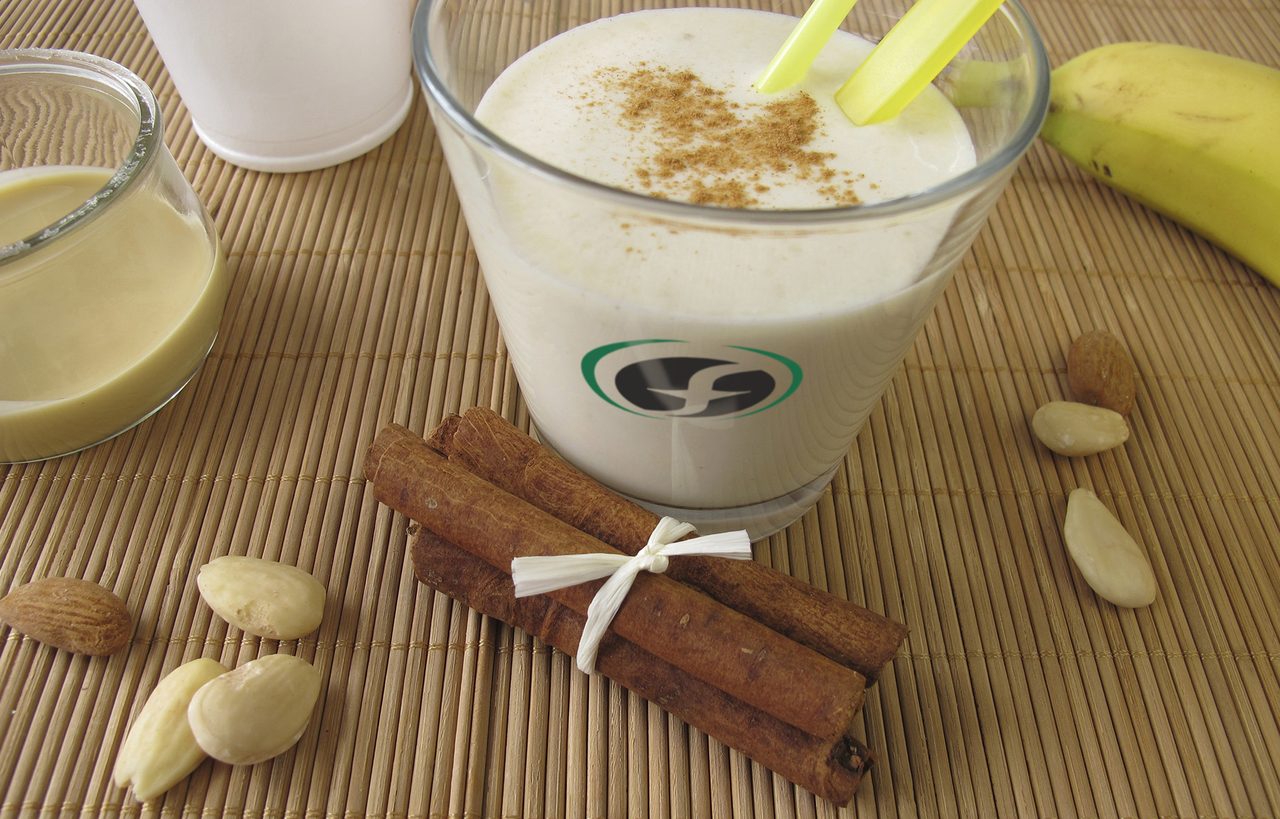
The variety of plant milks continues to grow, yet almond and oat continue to lead the pack. Photo courtesy of: First Choice Ingredients/Royal DSM, NV
When possible, developers favor the use of plant-based ingredients that have relatively neutral flavor profiles to reduce the need for masking. In plant-based yogurt, lactic acid and other natural flavors, such as citric acid or fruit, can be added to mimic the tart flavor of yogurt, while the use of traditional yogurt cultures also creates a recognizable flavor profile.
Similarly, plant-based cheese analogs, including those from Vevan Foods, a division of Arthur Schuman, Inc., and Forager Project, LLC are utilizing traditional dairy cultures to ferment plant-based matrices, yielding cheese-like flavor and aroma profiles. Forager Project’s line of plant-based cheeses are made from the brand’s cashew milk yogurt, which provides the right combination of fat, protein, and dairy culture flavor notes to yield a vegan cheese that closely mimics dairy cheese. “The yogurt provides the depth of flavor through its cultures, and in combination with organic starches, we deliver a great melt and stretch,” says Rob Lacy, VP of product development.
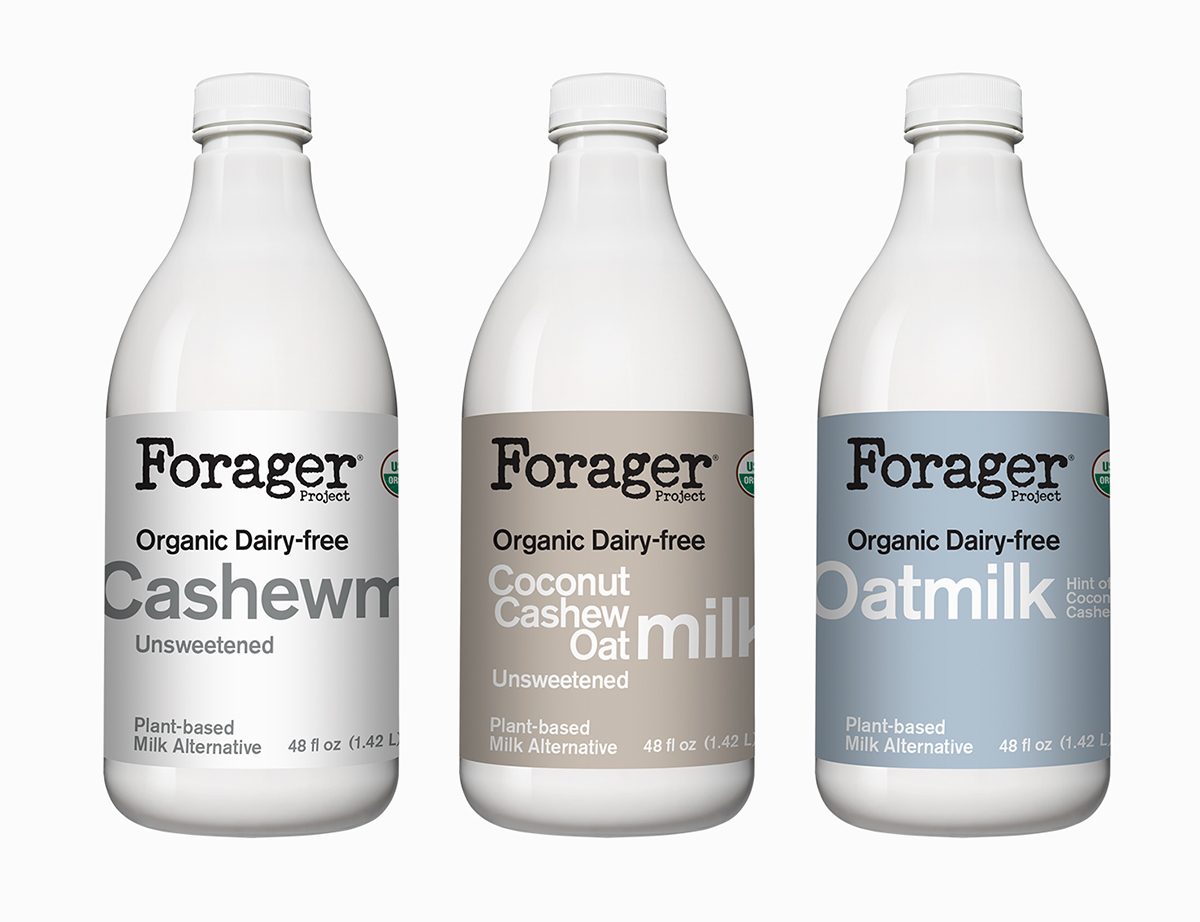
Dairy analog makers must artfully combine multiple ingredient types to recreate the expected organoleptic structures and nutrition of true dairy. Photo courtesy of: Forager Project, LLC
Nutrition competition
More than 30% of US consumers prefer dairy milk due to its clean ingredient line and high nutritional value, and 50% of US consumers cite high vitamin and mineral content as the primary driver for consuming dairy milk. A cup of whole cow’s milk contains 12-14g lactose, approximately 8g fat, 8g of protein, about 125IU vitamin D, plus 25% and 8% of the daily values for calcium and potassium, respectively.
Because of this high concentration of nutrients in dairy milk, most dairy-free brands must cater to consumers who don’t want to compromise on nutrition. Dairy analog developers add nutritional value to their products by fortifying them with proteins, vitamins, and minerals to closely match or even exceed the nutrition profile of dairy milk. The Protein Digestibility-Corrected Amino Acid Score (PDCAAS) score is an important measurement for developers creating high-protein dairy alternatives such as yogurt, cheese, and milks. Cow’s milk has a PDCAAS of 1, indicating that it is a complete protein, containing the nine essential amino acids. For its vegetarian counterparts, combinations of different plant proteins often are required to achieve a PDCAAS close to or equal to 1.


With major companies like Nestlé, SA and Danone, Inc. investing in plant-based and other dairy-free innovations, it’s clear consumers will be enjoying non-animal versions of milk, cheese, yogurt, and ice cream “till the cows come home”…or rather, until they don’t.
Vitamin D and minerals are common boosters included in plant milks. Mooala Brands, LLC, offers a comprehensive line of plant-based milk alternatives, creamers, and rich keto beverages that cater to flexitarian consumers seeking clean labels, good nutrition, and a flavorful sensory experience. Its signature Banana Milk line is made from bananas and sunflower seeds, plus added calcium and potassium to bring it on par with dairy. “Our plant-based milks have a similar thickness to 2% dairy milk, and they can be used in the same way as traditional dairy,” says Jordan Campbell, Mooala vice president. But they don’t have the same flavor profile as cow milk.
While some consumers want dairy alternatives that remind them of the real thing, others are less focused on exact dairy mimicry and more focused on new and unique sensory experiences. This has not only been reflected in the boom in plant-based milks from nuts and grains but a jump in sales of home appliances, such as the ChefWave Milkmade, for making single-ingredient milk alternatives.
“Many consumers actually do not prefer the mouthfeel or taste of dairy, so rather than mimicking texture and flavor of dairy milk, we crafted our recipes to be delicious on their own,” says Campbell.

The popularity of plant-based dairy is driven by three consumer concerns: health, environmental sustainability, and ethics. Photo courtesy of: MustLove, LLC
While the drivers of dairy-free product consumption remain varied, so too do the current offerings of dairy alternatives. The technology is moving fast, proving nearly any plant can be manipulated into presenting
the flavor, texture and performance of dairy milk. One fringe example is the Chilean company, NotCo's application of molecular science and computer-driven models to create the company's NotMilk dairy milk analog made from pineapple and cabbage.
Consumers seeking good nutrition first might be more forgiving when it comes to texture mimicry. Others want their dairy alternative to taste and feel exactly like the real thing. Some want functionality in cooking and baking. And it’s a safe bet that the majority want all these aspects. In order to create a successful dairy alternative, developers with either or all of these consumers in mind can draw upon expertise from reputable ingredient supplier partners to formulate a product that delivers on expectations. PF
Olivia Conrad is a product development scientist and freelance science writer in Boulder, CO, with a degree in Food Science from the University of Maine. She has extensive experience in natural foods product development in categories ranging from frozen desserts to meat snacks. She also is an expert in food safety with a strong working knowledge of FSMA and HACCP principles. She may be contacted at oconrad2013@gmail.com.
November 2021
